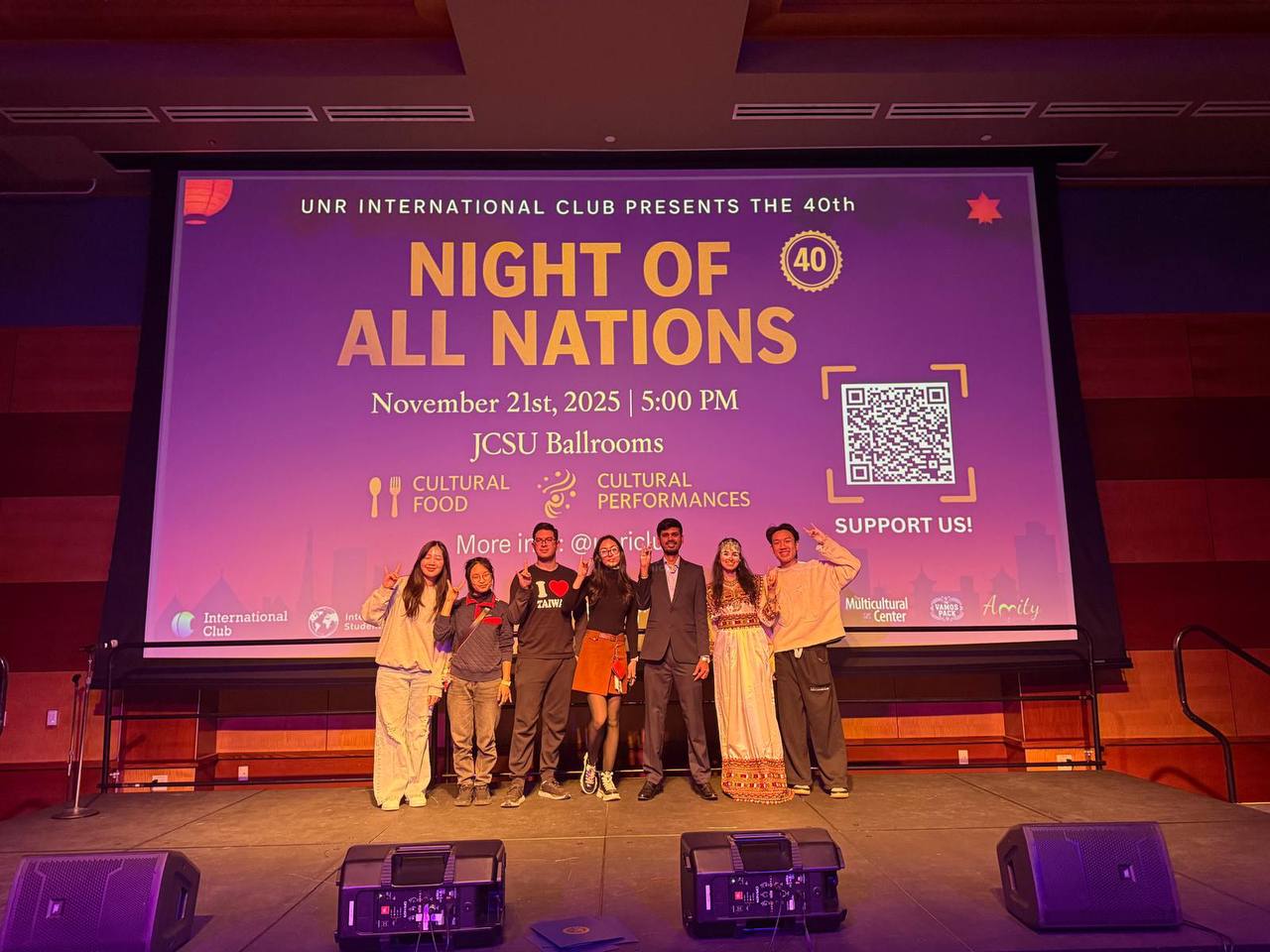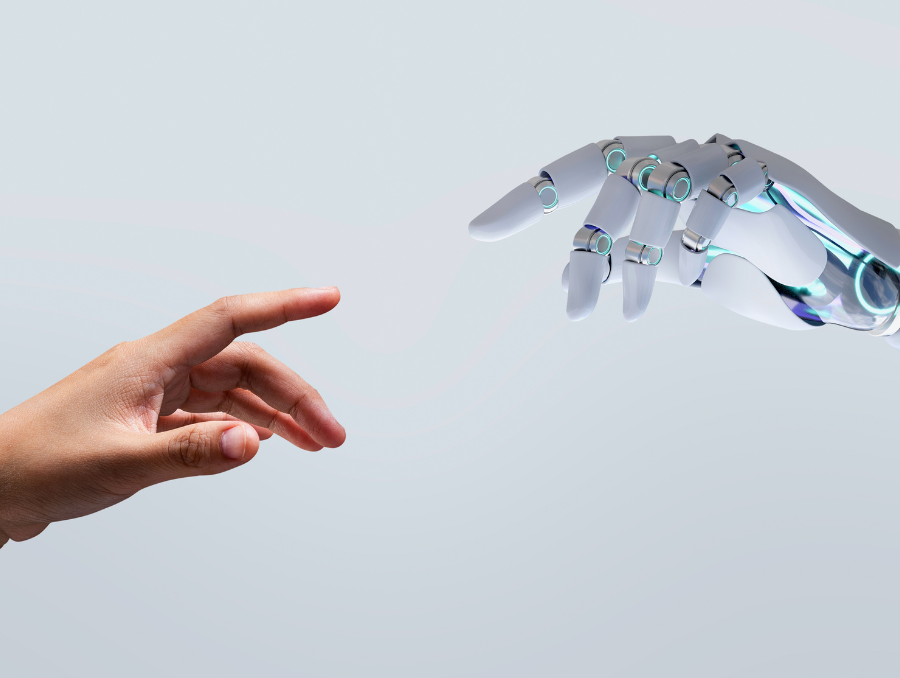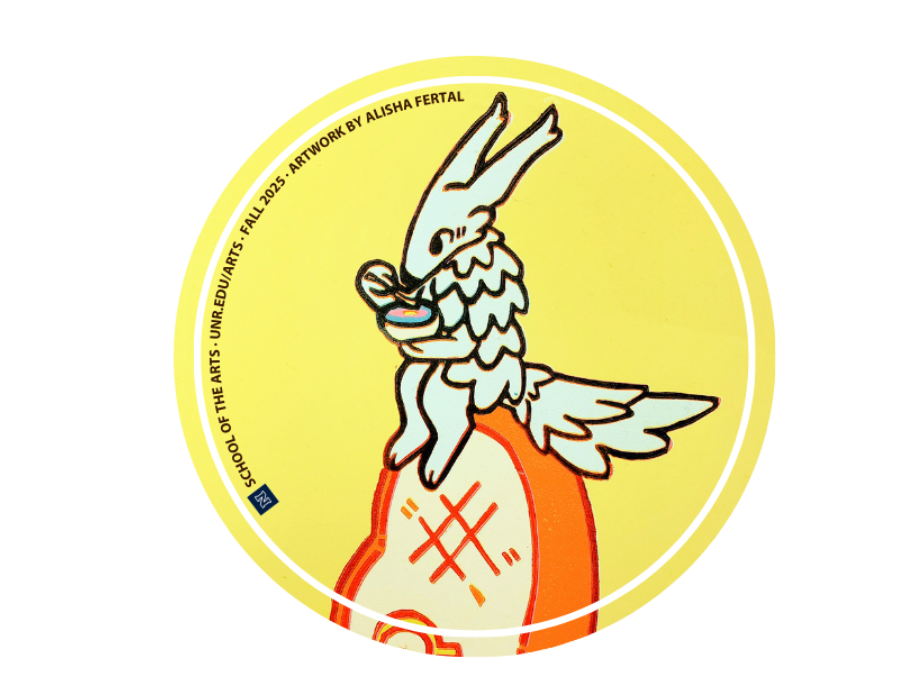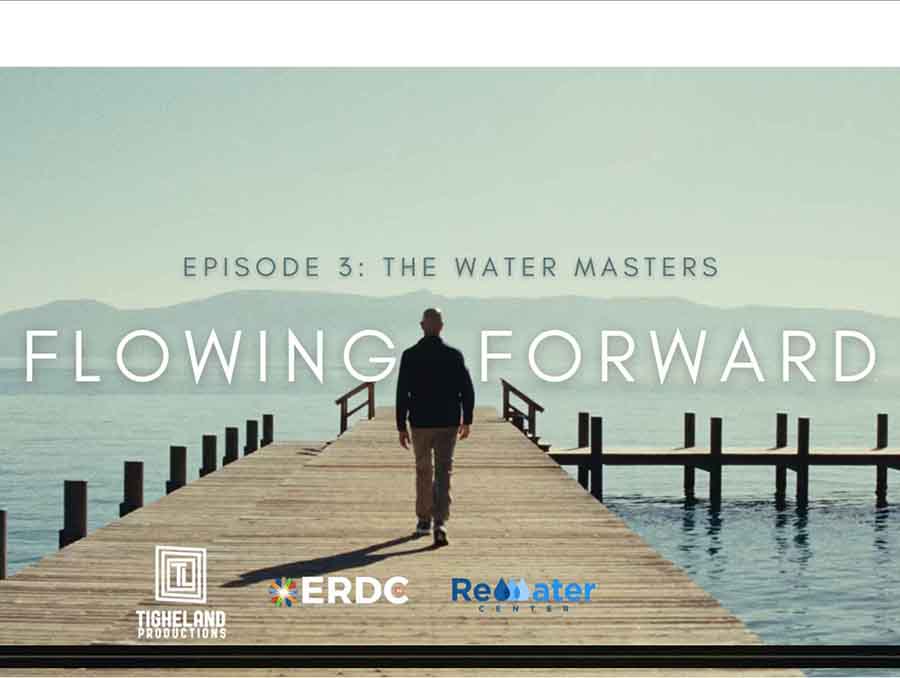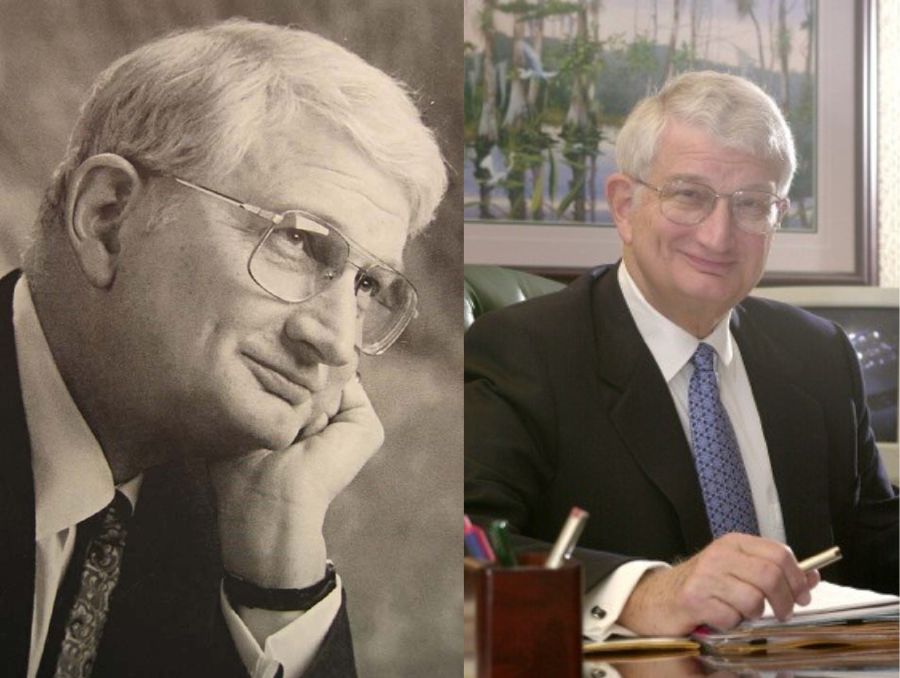
In this episode of Sagebrushers, University President Brian Sandoval and Stephanie Gibson, director of the John and Geraldine Lilley Museum of Art, discuss the University’s free public museum.
During the episode, Gibson highlights a recent generous donation, the unique exhibitions on display and the notable artists featured there. She also talks about her efforts to make art accessible to all Nevadans. She focuses on encouraging students of various ages and disciplines to visit and engage with the museum’s collection.
Sagebrushers is available on Spotify, Apple Podcasts and other major podcast platforms, with new episodes every month.
Sagebrushers – S3 Ep. 10 – Lilley Museum of Art Director Stephanie Gibson
Join host President Brian Sandoval and Gibson as they discuss the notable exhibits and projects at the Lilley Museum of Art.
President Brian Sandoval: This is Sagebrushers, the podcast of the University of Nevada Reno. Welcome back, Wolfpack Family. I'm your host, University President Brian Sandoval. Located in the heart of our campus, the John and Geraldine Lilley Museum of Art is one of only two public art museums in the state of Nevada. It offers a rich and accessible cultural experience for our students and the community. Today's guest, Lilley Director Stephanie Gibson, has curated arts and culture programs around the world. She previously served as assistant director at Nevada Humanities and joined the Lilley Museum of Art in 2023 as its director. She also curated the inaugural exhibition at the Lilley Museum and is passionate about connecting people with art and turning big, thoughtful ideas into engaging exhibitions and public programming. Today's podcast is being recorded at the Reynolds School of Journalism on our University's campus. Stephanie, welcome to Sagebrushers. I've been looking forward to this day, excited to share with our listeners some of the amazing work that's done at the Lilley.
Stephanie Gibson: I tell this to everybody. The museum is smack dab in the center of campus, and it is a gem. It’s just a really great place. Geographically, we have about 3,000 square feet of exhibition space. We host temporary exhibitions throughout the year, sometimes contemporary art or solo artists and sometimes historical shows. And we have an amazing public collection of art, over 3,000 objects that are in our care. We host collection shows on the second floor of our museum, and students and our community can come and spend time with art and they can rely on it for their own research. So, it's this really dynamic space, but it's a welcoming space. We want people to come in and sort of see themselves in the shows, feel comfortable, be able to spend time with art, take a break from everyday life and maybe learn something new.
President Brian Sandoval: Tell us a few examples of some of the exhibitions that you've had.
Stephanie Gibson: Oh, we've been doing some really amazing work. This past summer we hosted an exhibition of local artist Candace Garlock. Candace is a prolific artist of printmaking and sculpture. We've also hosted an international touring exhibition called The Counter Self that comes to us from the University of Toronto and Canada, and upcoming, we have a show that's coming from Colorado State University and this exhibition is mid-century artists, some really big names like Robert Motherwell, Robert Indiana, Bridget Riley and we're going to do some excellent programming around these really precious works of art. For example, Bridget Riley is this British artist who has sort of optical illusions of sorts in her work, and so we're going to be working with professors from the psychology department who do brain studies on optical illusions. So, the shows that we bring to the museum are ones that students can learn about art and appreciate art, but sort of see things in a different way. We're always looking for ways to get more students and more community members into the museum.
President Brian Sandoval: I think it's an amazing gem that has world-class art that sometimes you have to visit the big cities to be able to see it. And, we can, from our community, from our campus can come right here and have that kind of experience.
Stephanie Gibson: What's special is that for some of our students, this might be the first museum they've had a chance to visit, and this is their museum. It's a public collection. I like to say it's owned by the people of Nevada. So, for students to have access to this amazing collection, and we collect widely across time periods and cultures, we're actually the only free museum in the state of Nevada that does that, for students to have access to that here in Reno is really phenomenal. And so, we serve those students, but we also serve the broader region and folks come from off campus as well to see the collection that we have.
President Brian Sandoval: So, if I wake up in Sparks, I can come, for free come see the museum.
Stephanie Gibson: You absolutely can, for sure.
Stephanie Gibson: Well, that's fantastic. You know, I think we’ve barely scratched the surface in the introduction, but you've had a really impressive career in arts and culture. If you would talk a little bit more about your background and then tell us why you joined the Wolfpack.
Stephanie Gibson: Well, I've been working at museums around the world for my entire career. I'm originally from Ottawa, Canada, and I've had the pleasure of working with collections at the National Gallery of Canada, the Art Gallery of Ontario and Toronto and some internships abroad as well. I just love museums. I was one of those kids where I could sort of understand the world through art, and I think we all kind of can. When I wanted to understand history of the world, somehow entering it through a painting or through architecture was just like a really legible way for me to understand that. And so, I was always attracted to the way we could share art with one another. What I really love about museums as of late, is they're deemed these institutions of trust. There's these studies that have been done, I think there was a study in 2021 where museums are considered to be one of the most trustworthy institutions above NGOs, above news organizations even, above governments in some cases, and social media. Here we have this amazing opportunity for people to come visit the museum where they'll trust what we have to say, and like, what a responsibility that is and what an opportunity it is to talk about issues that matter to us, to Nevadans, to the Wolfpack through art, and that's why I just love working in museums.
President Brian Sandoval: And what brought you here?
Stephanie Gibson: So, I moved to Reno from Toronto, Canada in 2013 with my family. We were brought here when my husband joined the philosophy department as an assistant professor, and we've been raising our children here ever since, and it's been just the joy of our life, the surprise of our life, really, to move out to the mountain west and to make a home for our little Canadian family.
President Brian Sandoval: I’m going to ask you about that in a little bit, but that's a wonderful, wonderful story. So, you've talked a little bit about the experiences that you can have at The Lilley, and community involvement is deeply embedded in your mission. So, can you expand on how that's going to be extended in the future?
Stephanie Gibson: I am looking for this museum to be beloved because I love it so much. I love this collection and I love what we have to offer and I really want it to be useful. I want colleges across campus to find value in teaching their students through the collection and with art so they understand visual literacy, maybe understand empathy better through art, and then we have a lot of community programming in the works as well for lifelong learners to introduce folks to campus through the museum. We work as well with Washoe County School District to bring kids in the K-12 system to the museum. So, I don't think there is a community anywhere in this region that we don't want to welcome to the Lilley.
President Brian Sandoval: How can we learn more about the museum? And, for example, again, I live in the community, where do I go to see what's on exhibition and what's coming in the future?
Stephanie Gibson: So, you can go to our website, which you can find through unr.edu/Lilley. That's L-I-L-L-E-Y, and there's a little button there actually where you can subscribe to our newsletter and you can find out about exhibitions, openings, talks, conversations, all the things that happen at the museum.
President Brian Sandoval: So, you talked about permanent collection at the Lilley. What are some of your favorites?
Stephanie Gibson: I have these two works that I'm completely obsessed about, and if you've ever talked to me about our collection, you've probably already heard me talk about these. We have some Robert Caples paintings that were done under the Farm Security Administration program and the Federal Works program during the thirties where he painted these large-scale paintings of biblical scenes, so of the last supper, and these are paintings that were done in the thirties that have such a contemporary resonance to them, and I think they're so interesting, and I've been doing more research on those works right now. We will be actually reinstalling our permanent collection on the second floor of the museum in early 2025, and I hope to prominently feature those pieces along with some other works that are beloved by our community.
President Brian Sandoval: The museum recently received a very generous gift of half a million dollars to create an art storage and reading room. Can you talk a little bit more about that?
Stephanie Gibson: Yeah, so I really take seriously the stewardship that we have to do for this collection. As I've said before, this is a public collection that's owned by all of us and it needs as much care and attention as we can give it and it's growing and we need more storage. We were granted a very competitive gift from the National Endowment for the Humanities of half a million dollars to kickstart that process of getting more storage space for the collection. It'll also give us a chance to open up the space more so when researchers come to study the work that we have, they can do so amongst works of art. So, it's really exciting.
President Brian Sandoval: That's great, and you talked a little bit about it, but the exhibitions that are coming this fall. I was just there a couple days ago and I see it under construction.
Stephanie Gibson: So, this fall we're welcoming A Sansei Sense of Legacy, and this is a show that features art created by second-generation Japanese American artists, and they're reflecting on the horrific past of incarceration of Japanese Americans during World War II. So, we're working closely with the history department and the College of Liberal Arts to develop programming around this art and those conversations. I'm really looking forward to that.
President Brian Sandoval: No, that sounds really powerful. We also have another amazing museum in the community, the Nevada Museum of Art. Do you work with the Nevada Museum of Art?
Stephanie Gibson: We do. In fact, they have a wonderful Maynard Dixon exhibition on that. We've lent a couple of pieces from the Lily collection, so these are good friends of ours. And, this past year in 2023, we collaborated on a joint exhibition of the artist, the LA based artist, Guillermo Bert. So, that was a wonderful collaboration and they offer free entrance to their museum for all University of Nevada, Reno students. So, we all recognize the importance of welcoming students to experience more art.
President Brian Sandoval: I just want to say, I want to thank Mr. Wayne Prim who made a very generous donation to the Nevada Museum of Art, which allows University of Nevada students and TMCC students to go to the Nevada Museum of Art for free forever. And so, it really is a benefit to our campus, but you've talked a little bit about it. To really expose our students to the arts I think is really important.
Stephanie Gibson: It's kind of incredible the way you can learn about any discipline through art. I think mathematics becomes really interesting when you think about it through art. I've seen studies sort of research done for medical students learning empathy by visiting paintings and having to describe them or repaint them kind of in the similar way that they have to interact with patients. I see a great potential for the work that we do at the museum to have long-reaching arms across campus.
President Brian Sandoval: I'm going to go back to, you talked a little bit about coming from Canada and you've been here with your family for about 10 years. What is it that you love so much about the area?
Stephanie Gibson: The region has been, first of all, the people are so welcoming. Reno is a place of a lot of transplants, and we've really found a community here where people have welcomed us with open arms, and really been open to what we bring to our community and we've been super grateful for that. I mean, it's the obvious answer. Having Lake Tahoe at our doorstep has been absolutely phenomenal. We were just touring the new campus just last week just to take a look at how the University of Nevada, Reno is expanding up there, and it's just really wonderful to see our children are just thriving here.
President Brian Sandoval: Well, unfortunately, that is all the time we have for this episode of Sagebrushers, and thank you for joining us, Stephanie.
Stephanie Gibson: Thank you so much.
President Brian Sandoval: No, I really enjoyed this. I can't wait for everyone to hear what you have to say. But, join us next time for another episode of Sagebrushers as we continue to tell the stories that make our Universities special and unique. Until then, I'm University President Brian Sandoval, and as always, go pack.

